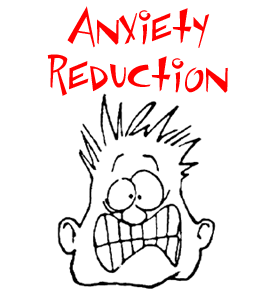 We all know the uncomfortable feeling of anxiety. Our hearts race, our fingers sweat, and our breathing gets shallow and labored. We experience racing thoughts about a perceived threat that we think is too much to handle. That’s because our “fight or flight” response has kicked in, resulting in sympathetic arousal and a narrowing of attention and focus on avoiding the threat. We seem to be locked in that state, unable to focus on our daily chores or longer-term goals.
We all know the uncomfortable feeling of anxiety. Our hearts race, our fingers sweat, and our breathing gets shallow and labored. We experience racing thoughts about a perceived threat that we think is too much to handle. That’s because our “fight or flight” response has kicked in, resulting in sympathetic arousal and a narrowing of attention and focus on avoiding the threat. We seem to be locked in that state, unable to focus on our daily chores or longer-term goals.
Below are six strategies that you can use to help your anxiety.:
(1) Reevaluating the probability of the threatening event actually happening
Anxiety makes us feel threat is imminent yet most of the time what we worry about never happens. By recording our worries and how many came true, we can notice how much we overestimate the prospect of negative events.
(2) Decatastrophizing
Even if a bad event happened, we may still be able to handle it by using our coping skills and problem-solving abilities or by enlisting others to help. Although not pleasant, we could still survive encountering a spider, having a panic attack, or losing money. It’s important to realize that very few things are the end of the world.
(3) Using deep breathing and relaxation to calm down
By deliberately relaxing our muscles we begin to calm down so we can think clearly. If you practice this without a threat present at first, it can start to become automic and will be easier to use in the moment when you face a threat. Deep breathing engages the parasympathetic nervous system to put the brakes on sympathetic arousal.
(4) Becoming mindful of our own physical and mental reactions
The skill of mindfulness involves calmly observing our own reactions, including fear, without panic or feeling compelled to act. It is something that can be taught in therapy and improves with practice.
(5) Accepting the Fear and Committing to Living a Life Based on Core Values
Acceptance and Commitment Therapy (ACT) is an approach that encourages people to accept the inevitability of negative thoughts and feelings and not try to repress or control them. By directing attention away from the fear and back onto life tasks and valued goals, we can live a full life despite the fear.
(6) Exposure
Exposure is the most powerful technique for anxiety and it involves facing what we fear and staying in the situation long enough for the fear to habituate or go down, as it naturally does. Fear makes us avoid or run away, so our minds and bodies never learn that much of what we fear is not truly dangerous.
Source:
